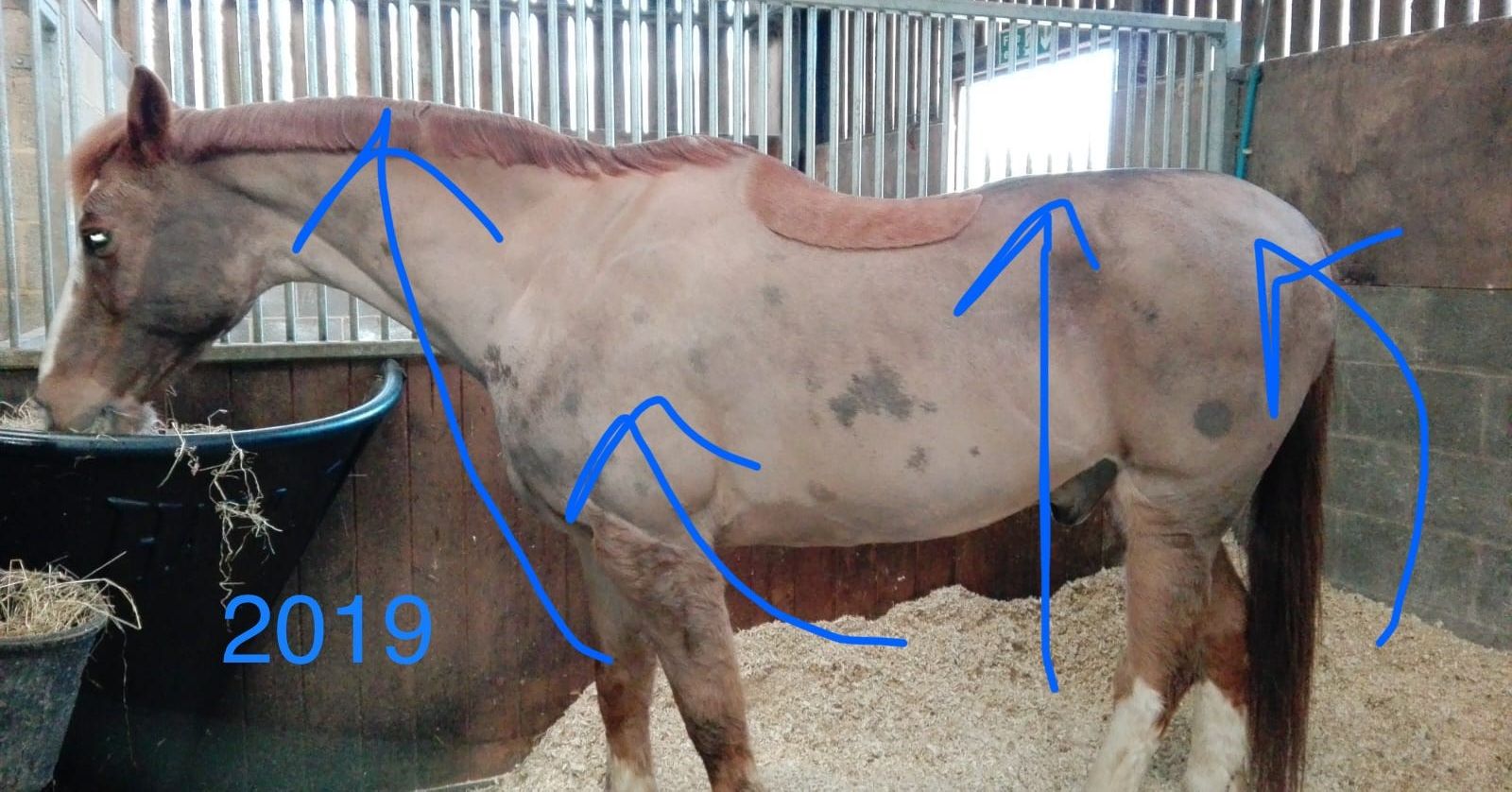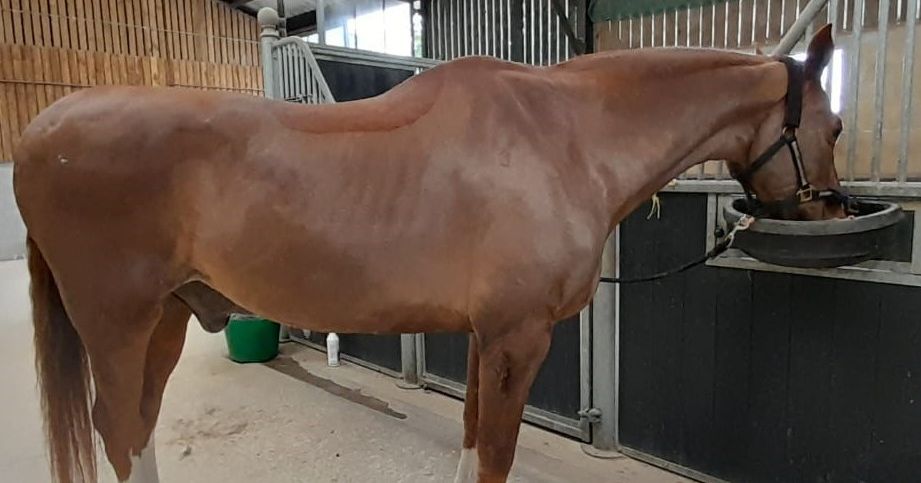Keeping the older horse happy and healthy requires diligent and dedicated management. Age-related conditions such as osteoarthritis and PPID present challenges to even the most committed horse owner, and things can go wrong despite their best efforts. This case study describes how we helped our client manage their veteran horse’s insulin resistance and other age-related health conditions.
PPID and Insulin Resistance
Our client’s horse is a 27 year old KWPN Dutch Warmblood. Like many older dressage horses, he has battled against osteoarthritis, laminitis, inappropriate fat storage, insulin resistance and Pars Pituitary Intermedia Dysfunction (PPID or Cushing’s).
This horse’s owner has diligently managed his routine and diet to ensure he was kept as fit as possible without overdoing it, given his arthritis. However, our client was constantly stressed and worried that the next bout of laminitis was just around the corner! Whilst this horse’s PPID appeared to be largely under control on medication, further blood tests revealed that he was insulin resistant and still at huge risk of laminitis. Basically, his body wasn’t metabolising his fat even when he exercised!
Below is an image of our client's horse back in 2019:

Medication and Management Changes
As we have mentioned, our client had managed their horse’s diet and exercise diligently. However, this horse’s insulin resistance required further adjustments to be made.
Each aspect of the horse’s life was examined. Firstly, his diet was adjusted further to make sure it included enough long fibre to keep his gut healthy, but without the sugar. This was achieved by either soaking his hay for 12 hours before he had it or he had special hay grown for laminitics for its low sugar content. The horse was never fed any processed feed or treats (as these will have a sugar component regardless of how low sugar they claim to be) and he was only grazed when the laminitis risk was at its lowest. The horse wore every device available to keep his joints warm but his feet cool.
He was started on a course of fairly new medication, which helped increase his metabolism without exercise. This allowed him to use up his fat reserves and make his body more sensitive to insulin. He was then transitioned to another medication, which allowed him to live a more normal life but not risk a further laminitis episode.
Now, he is slender, his fat pads are much reduced and his coat is glossy and shiny - not bad for 27 years young! Our dedicated equine vets regularly monitor his insulin levels so any change can be acted upon before his laminitis risk becomes a problem. The image at the top of the page show our client's horse more recently.
PPID and Equine Cushing’s Management with Avonvale Equine Vets
Care of the older horse can be tricky and much like humans, age can bring with it some conditions which require lifelong medication to manage, no matter how healthy the rest of their life has been. Keeping the older horse fit rather than fat can be hard and stressful work but we are always on hand to help and offer you advice.
We are also delighted to offer our Cushingoid Horse Health Scheme. For just £17.50 per month, this simple, convenient and affordable plan is a cost-effective solution to managing your horse’s PPID. The plan provides seamless, hassle-free care and support for your horse, whilst helping to save you time and money.
Please visit our Cushingoid Horse Health Scheme page for more information and full terms and conditions.
If you have any questions on this, or any other topic, then please call us on 01295 670501.









